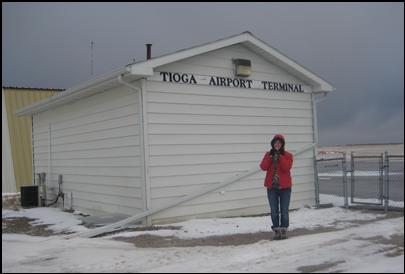|
Chanhassen * 952-934-5659 |
|
Leuthner Well Company Victoria * 952-443-2582 |











|
Dine in Downtown Victoria * 952-443-2858 |
|
MACKENTHUN’S Gourmet Meats Victoria * 952-443-1841 |
|
Holy Family Catholic High School Victoria * 952-443-4659 |

|
Island View Dining Waconia. 952-442-2956 |
|
Buying or Selling Victoria? Call Nan Emmer. 612-702-2020 |


|
Headlines and bylines |
|
Front Page Feature Story |
|
From the Editor |
|
Addie’s Drawing |
|
Letters to the Editor |
|
Victoria Moments |
|
Hook Line & Sinker |
|
Calendar of Events |
|
Click here to Advertise |
|
the Gazette |
|
Return to Home Page |
|
Order paper Gazette |
|
Notes and Quotes |
|
The Scoop at City Hall |








|
Home Page |
|
The Victoria GAZETTE |

|
February 2012 |
|
by Sue Orsen/The Victoria Gazette My great great Uncle Trond Opdahl got sick and died on the Valdez Pass of Alaska during the Klondike Gold Rush. He had boarded a train at the depot in his hometown of Minneota, Minnesota, on a cold January morning in 1898 -- the second year of the Gold Rush. After three days on that train through the North Dakota Badlands and Rocky Mountains of Montana, which were not as majestic as the mountains of his native Norway, he arrived in Spokane, Washington, from where he boarded a steamship, "a filthy old boat," that carried him and other hopeful stampeders into the port of Ketchican. From Ketchican they steamed to Juneau, and, unlike many gold rushers, veered not northward to Skagway but west to Valdez. Dumped with their gear to fend for themselves in the most unhospitable cold and killing climate, they came to use dog sleds and pack horses which died along with thousands of men during those heady days when visions of yellow gold gave people a fever. Trond's story is written up in a book called Fever Saga by Robert Lloyd Lee, a first cousin of my Grandpa Harold Opdahl who lived and died in the same hometown of Minneota, Minnesota. It's the place where my husband Allan Orsen and I graduated from Minneota High School in 1965, not even a century since the Klondike Gold Rush. Trond's story often comes to mind when we visit our daughter Jenny and her family who moved to Tioga, North Dakota, in 2008 and became involved in the Black Gold Rush. Allan and I just returned from a ten-day trip to be with them for a while and so that is the story I must write -- how much alike these days in the western part of North Dakota seem to those days in the Klondike. In the Klondike, thousands of men went in search of wealth and adventure, having pulled up roots and traveled far from home and family. In Tioga, thousands of men continue to pull up roots and travel from all across the country, alone or with their families, in search of work and big paychecks. In the Klondike, men had traveled by train, as well as covered wagons and caravans, in order to reach their destination. In Tioga, men continue to travel by train, as well as trucks and campers, in order to reach their destination. The Klondike attracted people from all walks of life. Trond was a 50-year old husband, father, and grandfather, a farmer and a horse trader, when he packed his bag for Alaska. His traveling partners from Minneota were two single men in their twenties. The Larson brothers were also never heard from again, but Trond's body was transported back to Minneota for burial. His grave is two miles from where I grew up. He died in March of 1898. Tioga, which calls itself the Oil Capital of North Dakota, also attracts people from every background. Jenny's husband Chris, who has a degree in Airport Management from Mankato State University, was a Project Estimator for an earthwork company. Jenny, a wife and mother, is a former cheerleader at the Chaska High School, state competitor on the Chaska Swim Team, homecoming attendant, and Miss Congeniality in the Chanhassen Junior Miss Pageant. She is a graduate of Carleton College with an MBA and 4.0 GPA from the Carlson School of Management here in Minneapolis, and she continues to thrive far away from her hometown of Victoria. The cold blistery winds and often heavy snows of Tioga call up of visions of what the weather must have been like on the Klondike. We've traveled to Ketchikan, Juneau, and Skagway and marveled at the spirit and stamina of the people who live there today, like those with a pioneer spirit in Tioga where history and homes are in the making, where there are risks and rough spots along with the changes and challenges. More story and photos are located at www.VictoriaGaztte.com. Click on Sue’s Album and scroll to Ten Days in Tioga 2012. Don’t miss Around Tioga Town! |

|
CLICKSTART 952-902-2014 |



|
Jenny poses for her mother in front of the Tioga Airport Terminal where her husband Chris, a pilot, is Airport Manager and chair of the Airport Board. With big people flying in to check out their investments and make more investments, plans for airport expansion are in the offing |